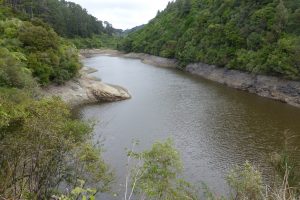16th of January 2021 – Blog post submitted by Beatrice
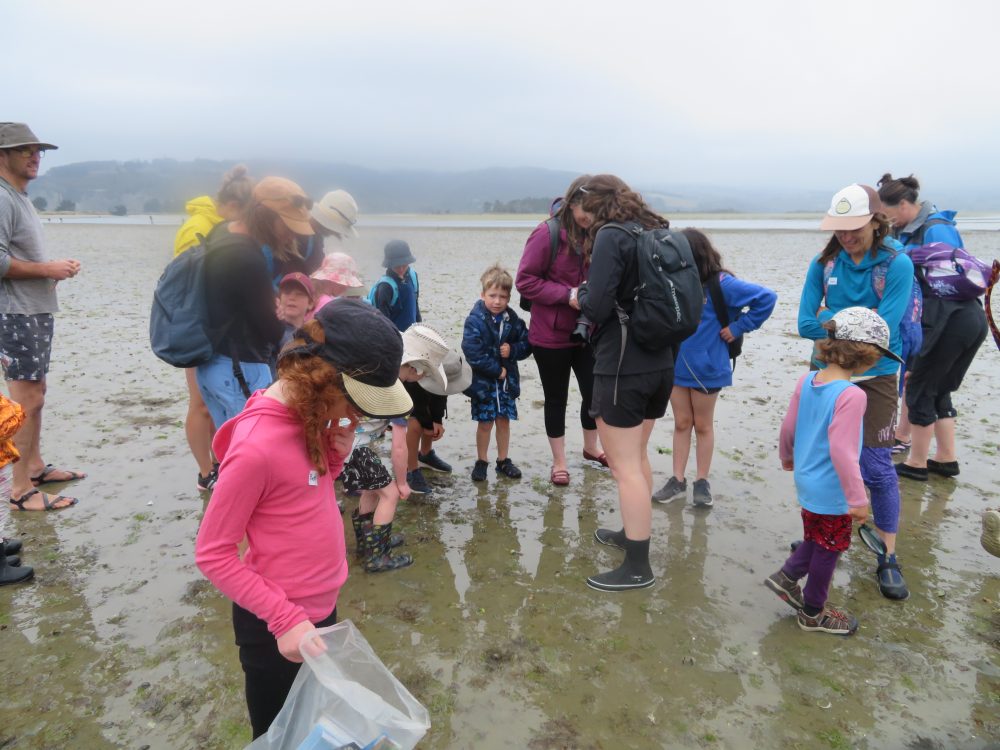
On a cloudy but calm lunchtime a great group of KCCers met at the Warrington Playground, to explore the rich environment of Blueskin Bay – Māori occupied this area since 1350 AD (I read in the history book Blueskin Days), probably for the very good reason that the estuary and surrounding areas are productive ecosystems that support lots of different kai.
We went out to see what sorts of creatures and plants we could spot.
The mud of the estuary was very easily traversed, being firm underfoot until we reached one low tide channel and found a wee patch of sinky sand that was really black. Why was it black there and nowhere else?
Progress was lots of stop/start as we broke out the magnifying glasses, nets and field identifying guides. Huddles formed whenever someone found something cool – slimy gelatinous tubes left on the surface by worms to act as snares to catch themselves food, a tiny blue starfish hiding in an old open cockle shell, camouflaged crabs with seaweed growing on them, and a heart urchin – dead, so we opened it up to see the insides, but it must have been dead a while! A bit whiffy.
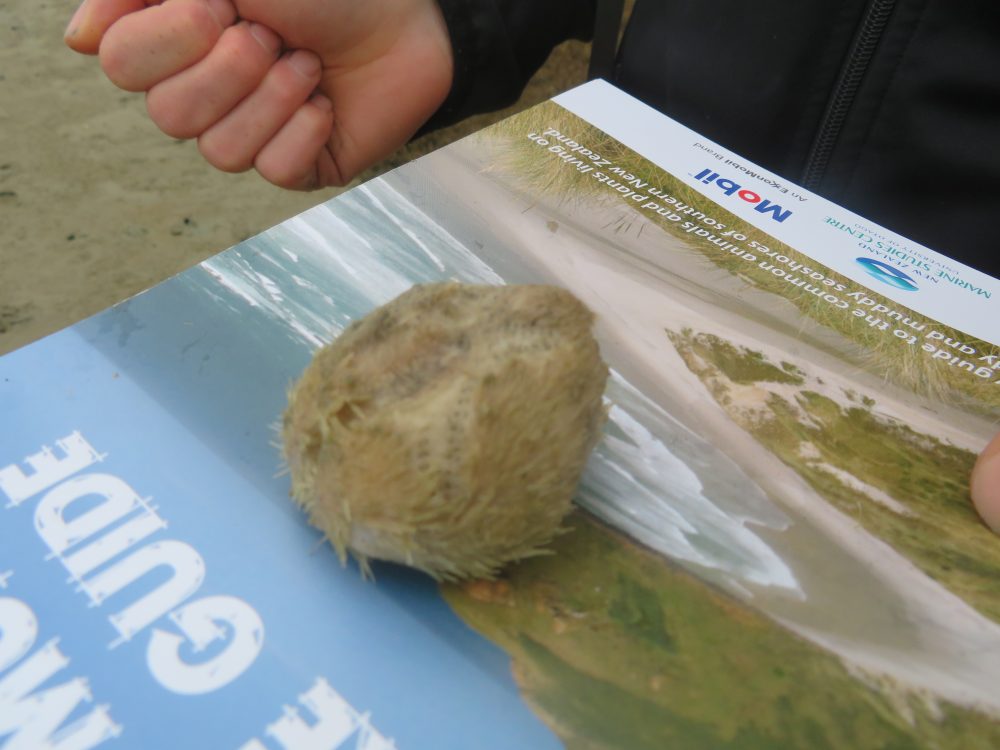
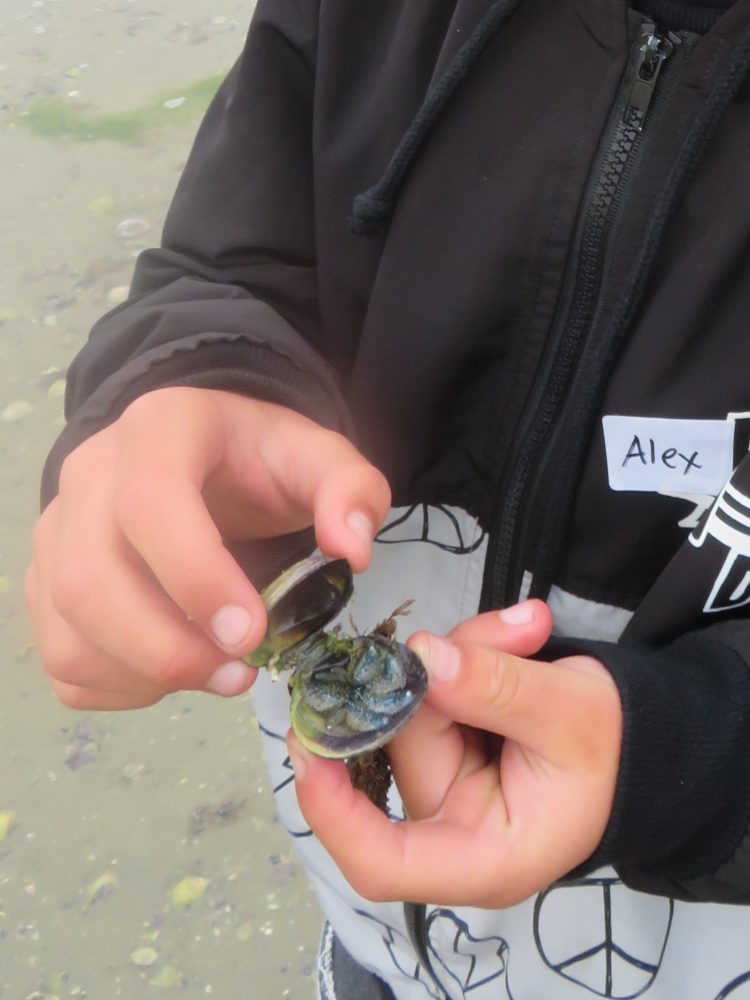
Nichola Salmond, an assistant research fellow from the University of Otago Marine Science Dept, was our generous guide to the local estuarine fauna. Tamariki made the most of her, impressing her with their prior knowledge and curiosity about things they didn’t know, like how snails get bigger shells as they grow.
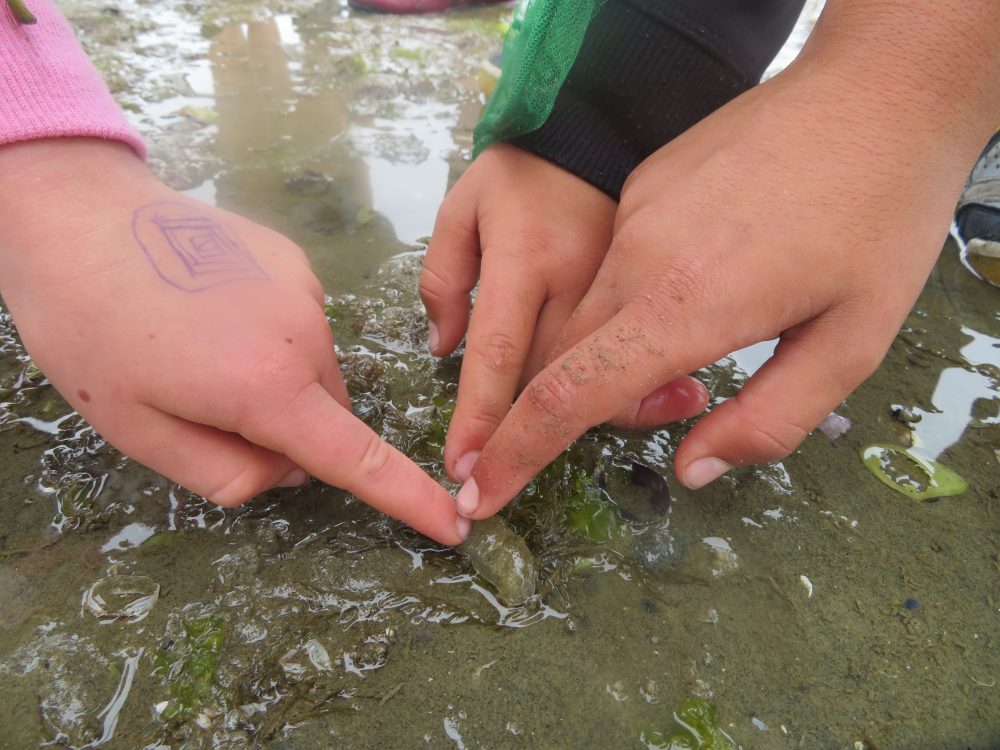
It didn’t take long to get to the island, but knowing the tide was going to start pumping water back into the estuary soon, we had a quick explore – climbing the dunes onto the side near the channel that connects the bay to the sea.
And found krill (squat lobster, Murida gregaria). Masses and masses of it, drifted up on the beach, a beautiful pinky orange. At first we thought it was all dead, but then someone saw one move. After that lots of ‘saving krill’ happened, with the hope that if we put them in pools of water, they may survive until the next high tide, and get away.

Some had obviously not got away – pink guano splashes showing some birds had had a feed, and we speculated on what else might eat this abundance of krill, if it was still at sea. Other fish? Whales even?
Finally we had a quick look at a bed of cockles, which in this area of Blueskin Bay grow to impressive sizes – the biggest we found was 62mm across. Nichola showed us the growth rings on cockle shells, where the paler areas are the fast summer growth followed by the narrow darker bands that are laid down in winter, a bit like tree growth rings. By our estimate, our 62mm cockle might have been between 8 and 10 years old.

The cockles in the bay are harvested commercially under the Quota Management System, and we looked at some 28mm cockles, to see the size that harvesters take them down to. We also learned that cockles start to produce eggs when they are only 18mm big. Maybe having babies at a young age is a key to restocking the population??!
We could have spent another few hours easily, but the tide doesn’t wait. We got a bit wet on the way back (especially the younger of our crew) but made it back still with smiles on our faces.
It was great visiting this very close-by but still wild place, with a lovely bunch of interested and interesting KCCers.

